“If you can make a dipole antenna, then you can make any antenna.” – NC Scout
Background
Your handheld radio has an antenna that is a quarter-wave “monopole”. It’s not very efficient, but it’s a compromise for better portability and convenience.
You can improve this by using a Tiger Tail (also known as a Rat Tail). This is done by adding a counterpoise to your HT antenna, turning your monopole antenna to a dipole antenna. This inexpensive and simply made extension will increase your transmission range and may increase your reception.
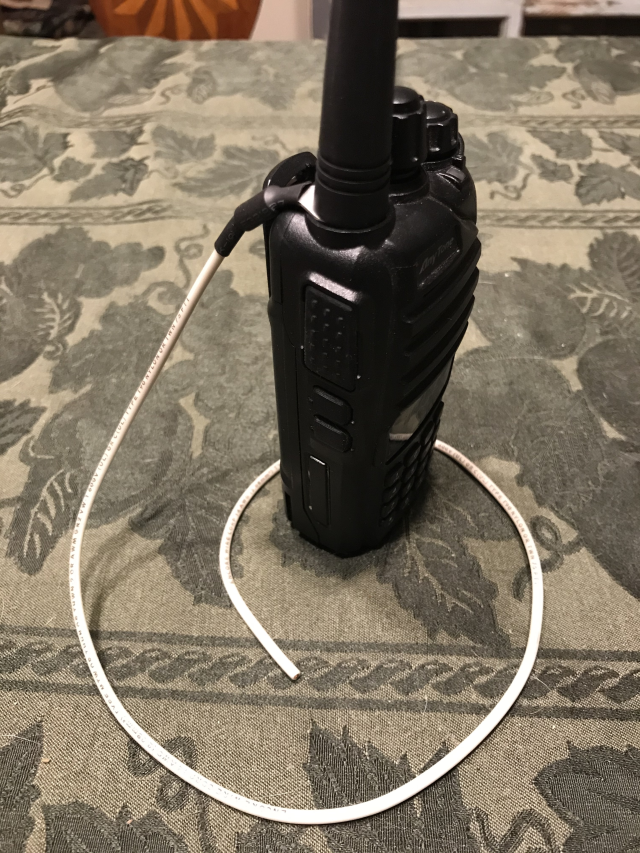
Because it is tuned you will need to create one for each of your commonly used frequencies. You can either swap it out when switching frequencies or have multiple Tiger Tails attached to your antenna base. The transmitting signal will use the most resonant Tiger Tail attached.
If you understand the theory, then you can build this counterpoise or any kind of antenna from these principles.
Dipole Antennas
Wavelength – the distance a radio wave will repeat its cycle. Our example here is MURS 3 (151.940 MHz) which has a wavelength (λ) of 6.36 feet. This frequency is in the VHF 2-meter band (1.97 meters). Note that you cannot transmit on this frequency unless you have a Part 95 MURS radio or have a true emergency.
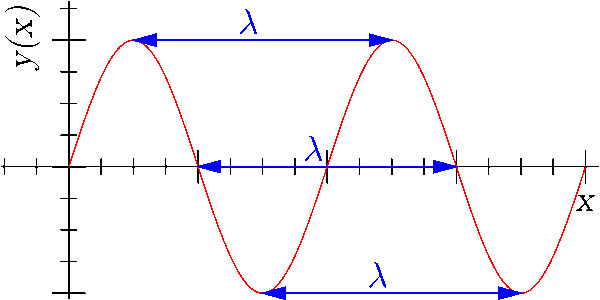
Dipole Antennas made for a frequency should measure 1/2 of a Wavelength (typically seen as λ/2).
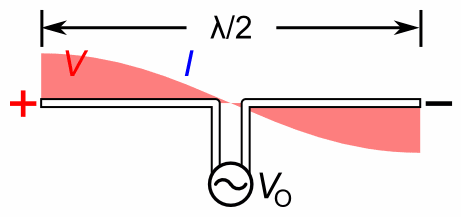
This length is where the antenna needs to be resonant (“tuned”) on the frequency you want. Best practice is to transmit on the most resonant antenna available. If you use an antenna that is not resonant, then it won’t transmit as well and a varying portion of radio energy turns to heat.
Since there are two legs (di-pole), each leg is 1/4 of a wavelength (λ/4). We can easily remember the formula using the mnemonic 1234. Find the length of each leg by using the formula:
1 leg (in feet) = 234 / frequency (in megahertz)
There are other considerations (wire material, wire gauge, coating, etc.) but this is a close estimate and good enough for a field expedient antenna.
Supplies
- 1 – Ring terminal that fit over the antenna post on your radio (3/8″) or under a belt clip screw (#6 or #8).
- A length of wire – Can be 20 AWG primary wire, 14-gauge THHN, or even lamp cord.
- (optional) One to two inches of heat shrink tubing that fits over the wire and ring terminal crimp
Tools
- Measuring Tape
- Wire Snips
- Wire Strippers
- Wire Crimpers
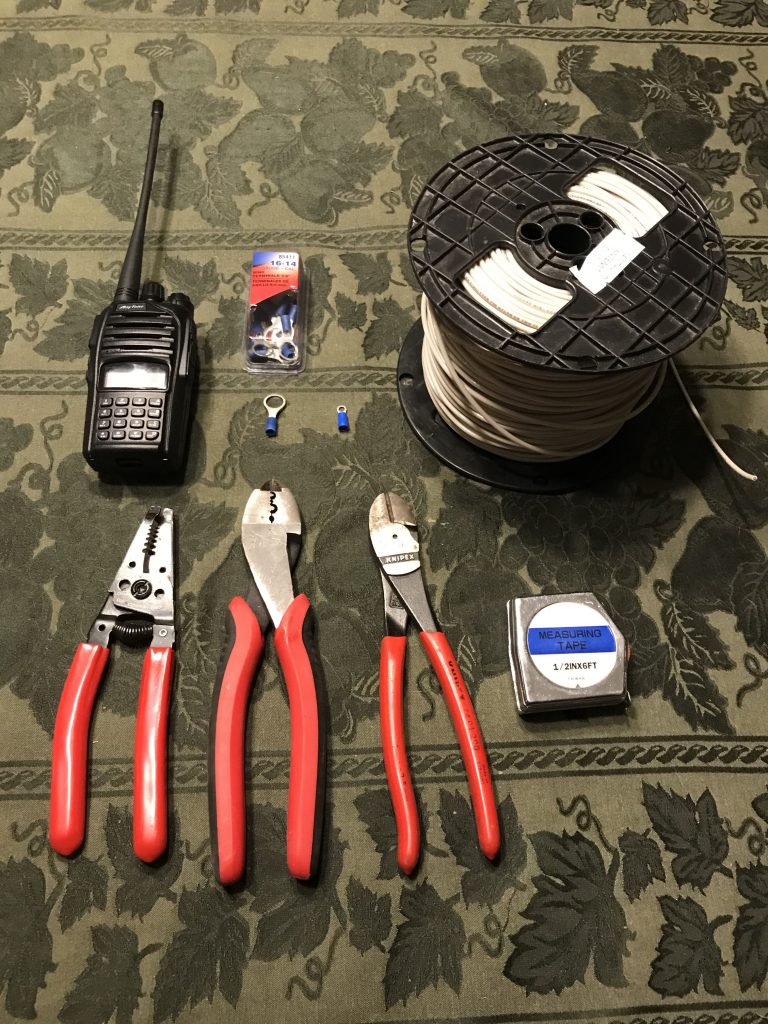
Assembly
- Determine the frequency you want. In this example we will use MURS 3 (151.940 MHz).
- Find the leg length (in feet) equals (234/ frequency (MHz))
- Our formula is: 1 Leg = 234 / 151.940 MHz = 1.54 feet
- Convert to inches. (length in feet x 12) = length in inches
- This makes 1.54 feet x 12 = 18.48 inches (round to 18.5 inches)
- Add 12% to this length then add a ½ inch (Sources says it needs to be radial length. We will try to verify this)
- This makes (18.5 inches x 1.12 = 20.7 inches) + ½ inch = 21.2 inches
- Measure and cut your length of wire
- Strip a ½ inch off one end of the wire. Crimp on a ring terminal at this end. Some sources say that it should be soldered on, but you should use whatever means is available to you.
- Slide your heat shrink tubing over the wire and over the crimp. Use a heat source to evenly shrink it. This is to better secure, weatherproof, and make your counterpoise look better.
If you use the 3/8” ring terminal, remove your Handheld Radio antenna. Place the 3/8” ring terminal over the antenna base and reattach your antenna. The Tiger Tail should be snuggly held between the base and the antenna.
Alternatively, if you use a #6 ring terminal, then secure it to a grounded portion of the radio. For Baofeng radios, this is the belt clip screws. Unscrew one belt clip screw, place the ring terminal over the hole, then replace the screw.
To improve this, you will need to use an antenna analyzer to fully test and trim wire off for lowest Standing Wave Ratio (SWR). In our example above, the best length is between 18.5 and 20.7 inches. If you don’t have an antenna analyzer and are in the field, then just cut it anywhere in between these measurements. Make sure you add a ½ inch for the crimp.
Gallery
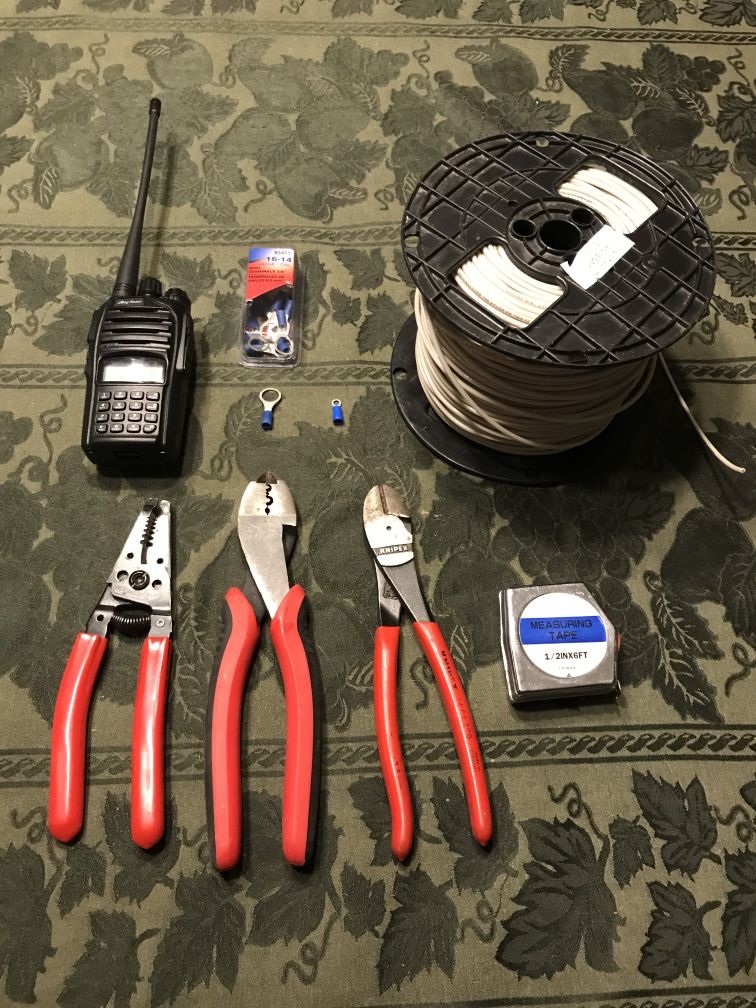
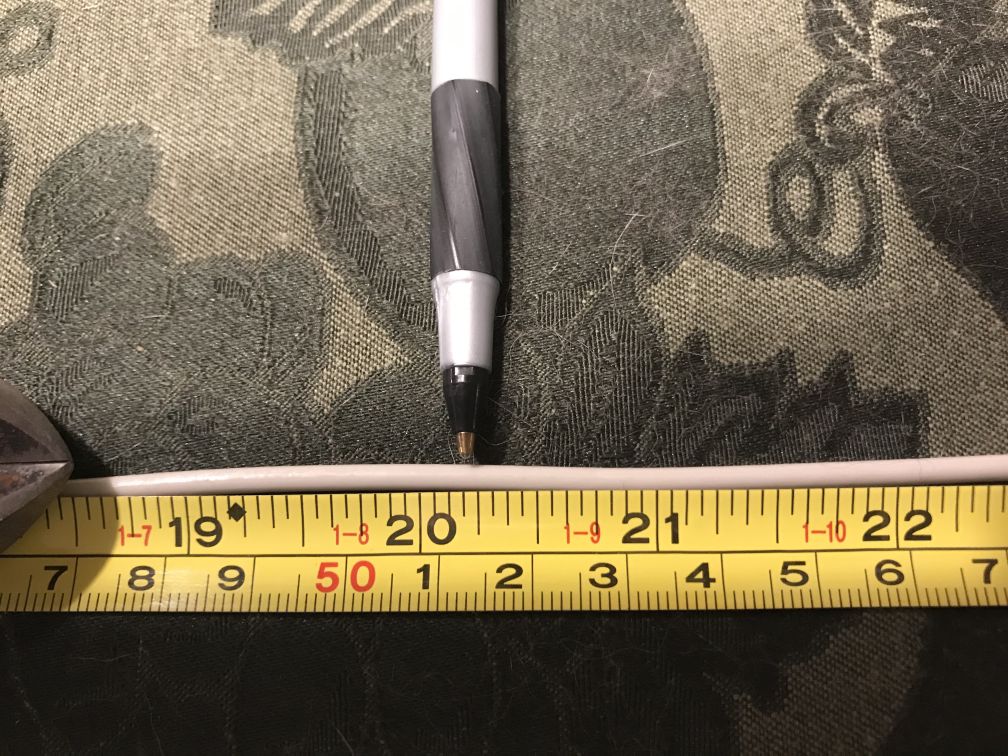
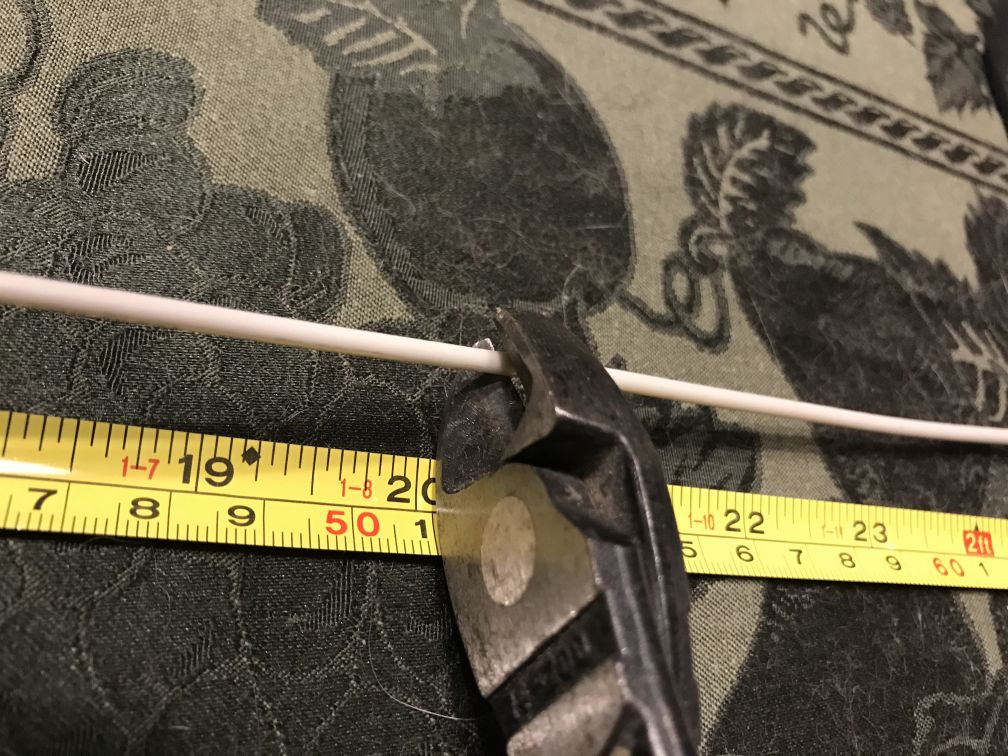
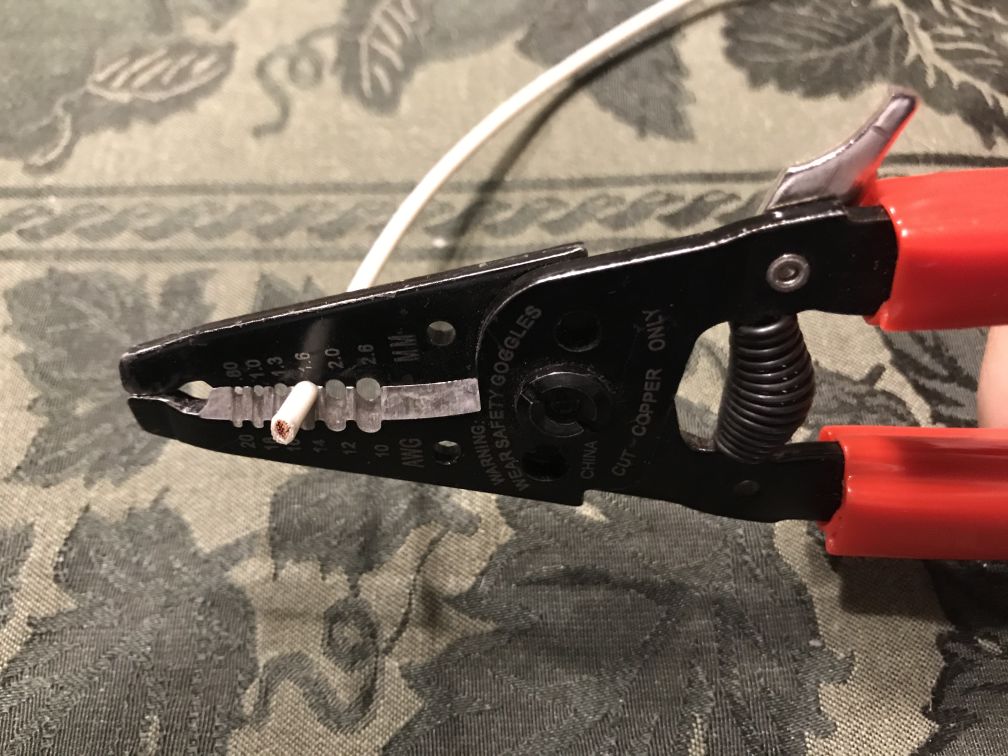
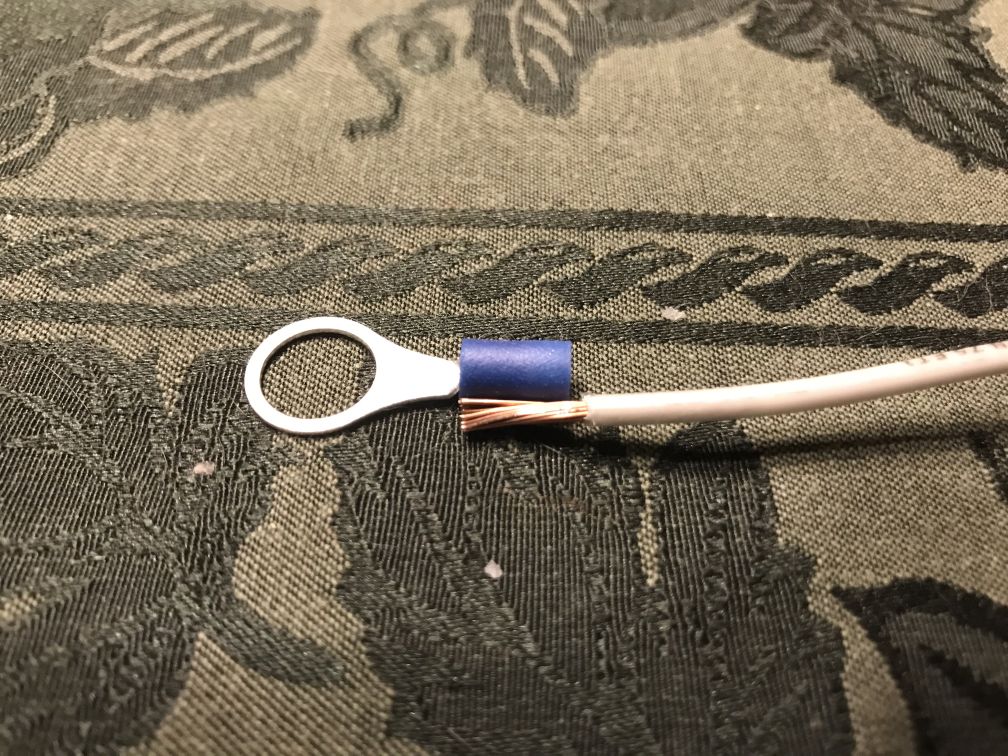
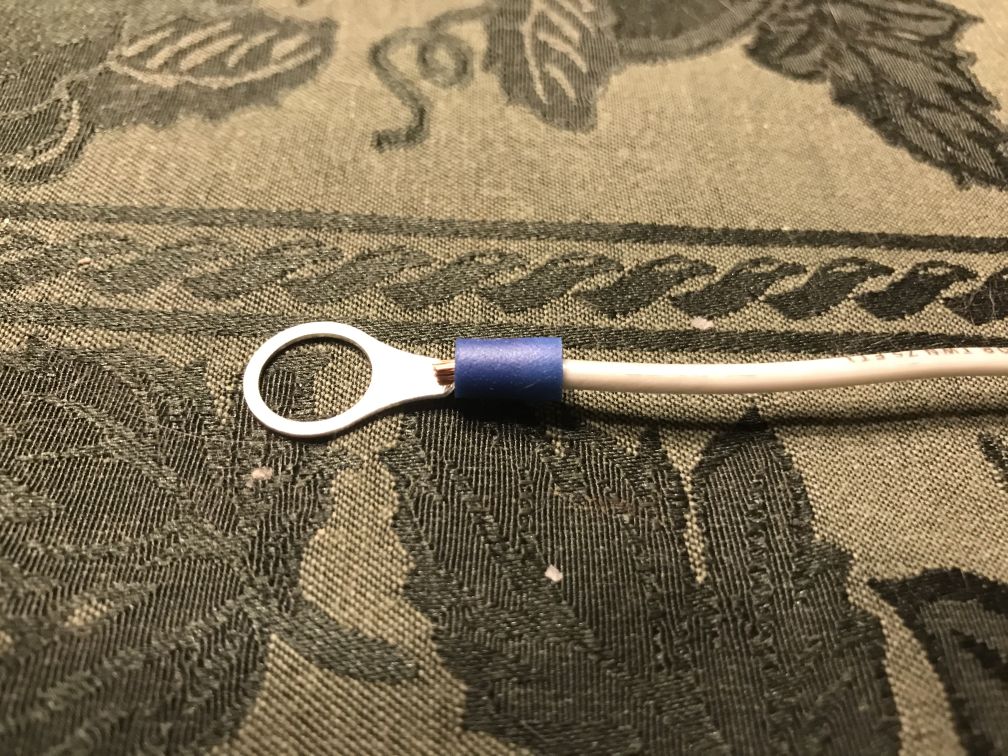
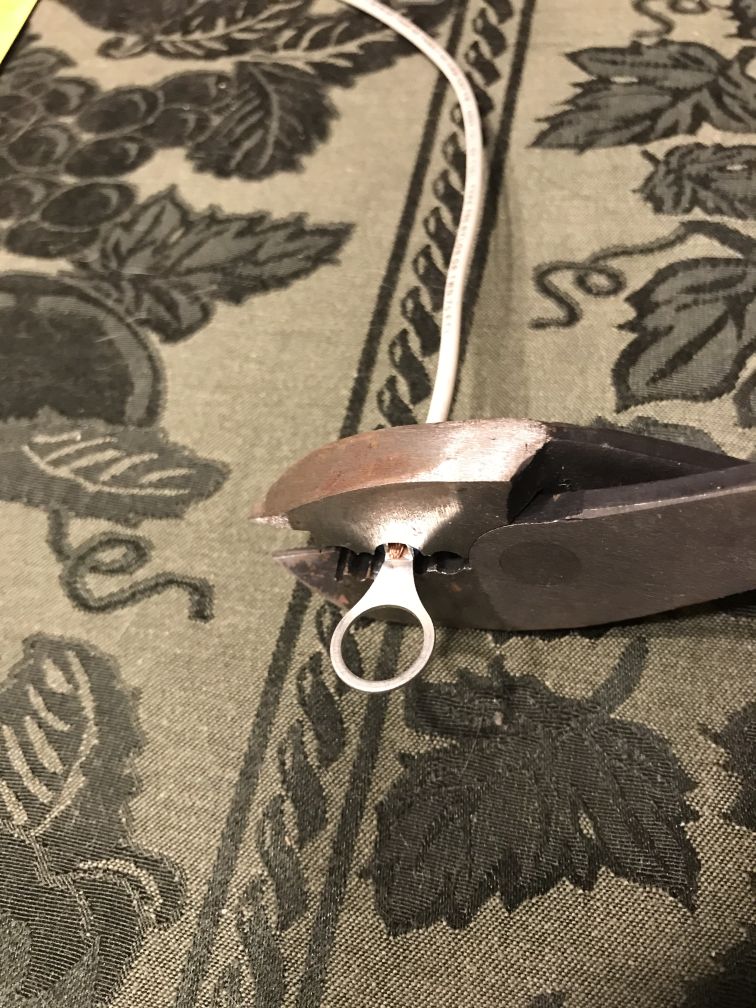
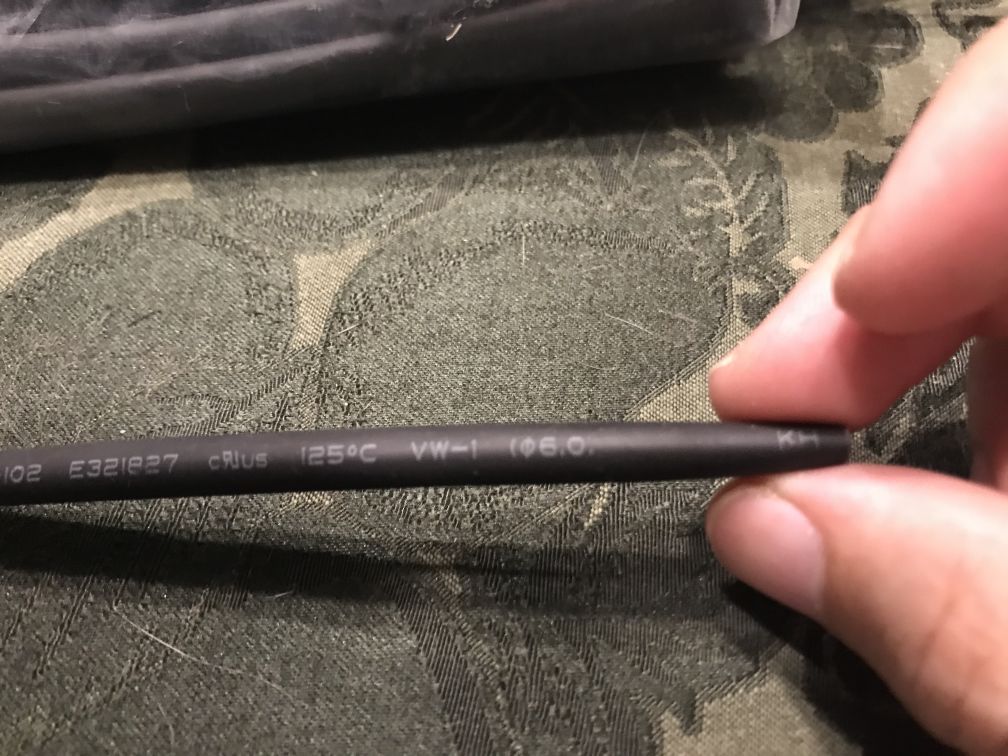
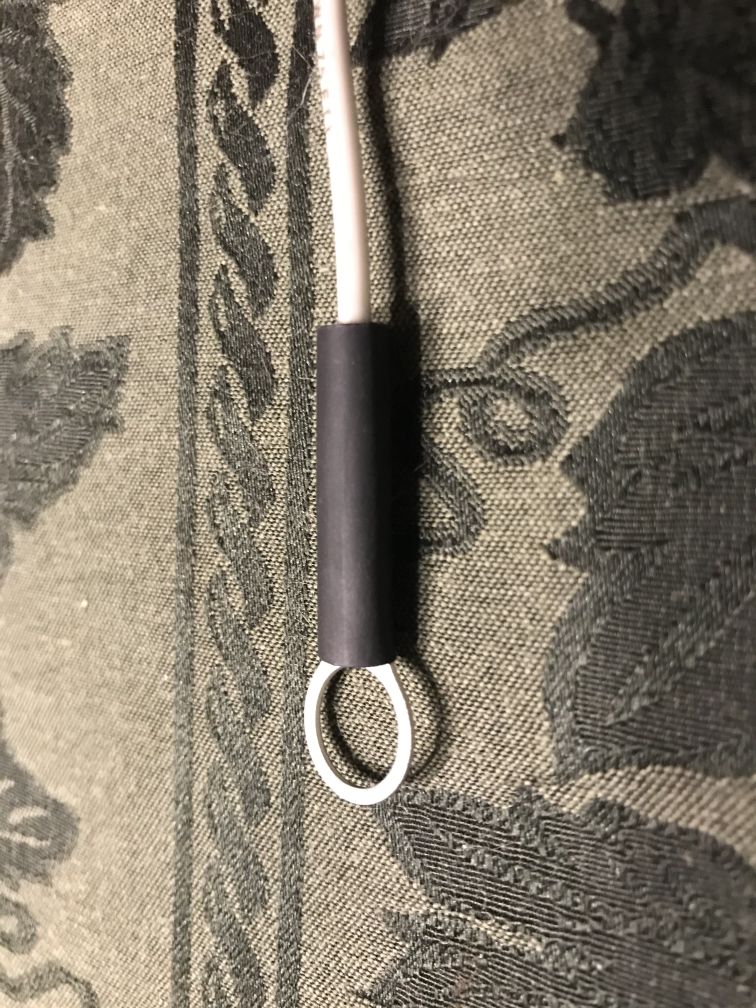
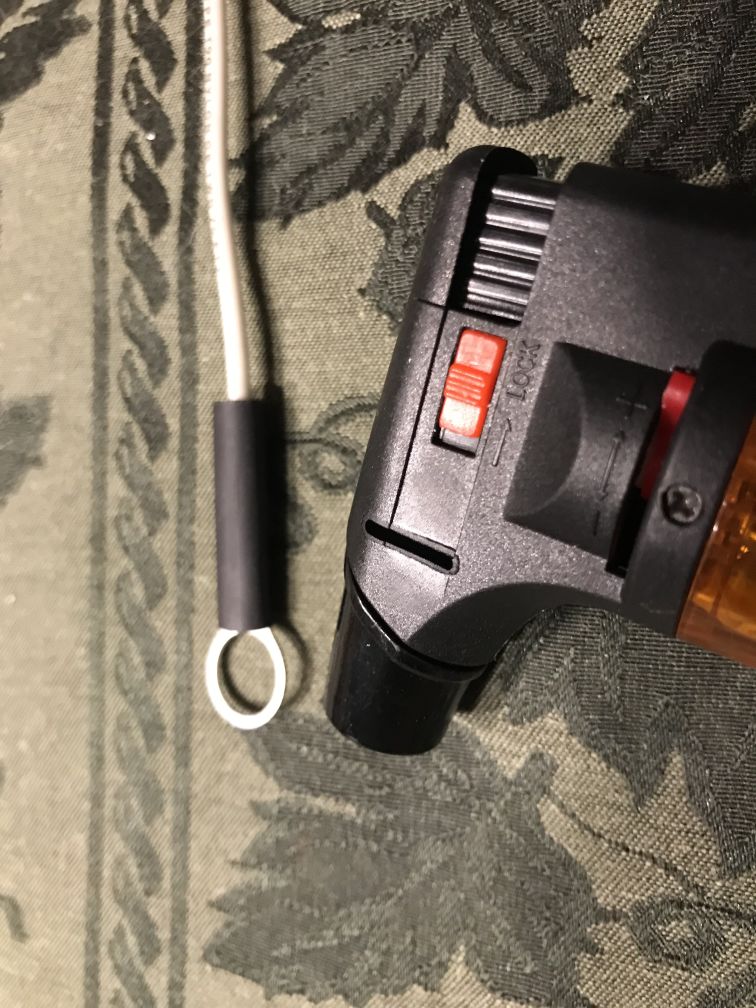
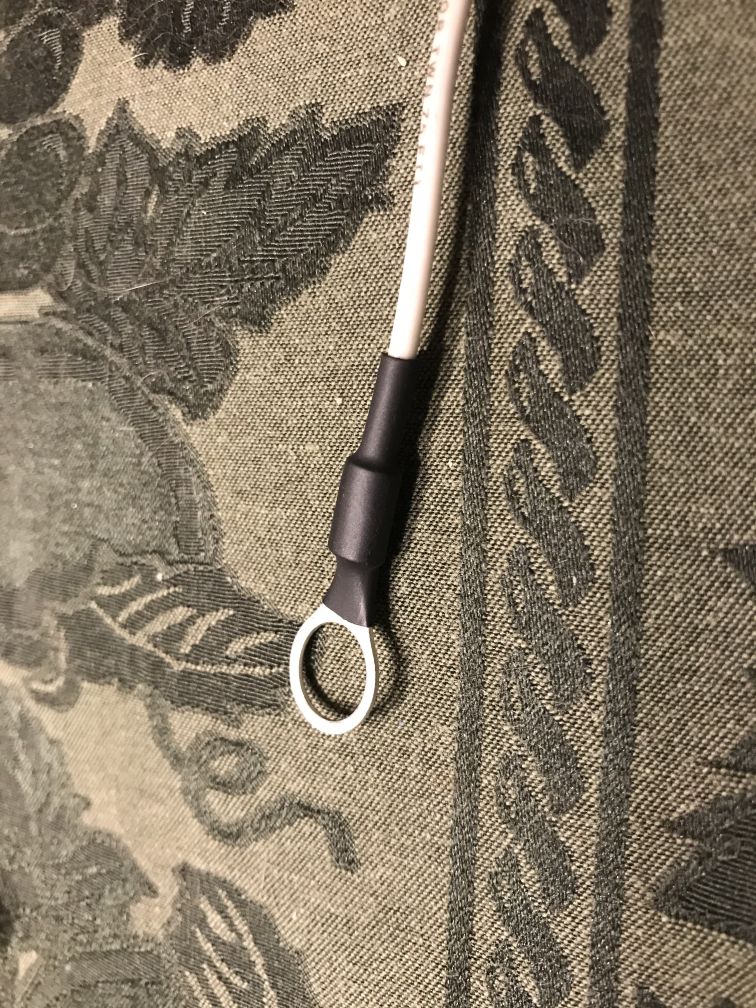
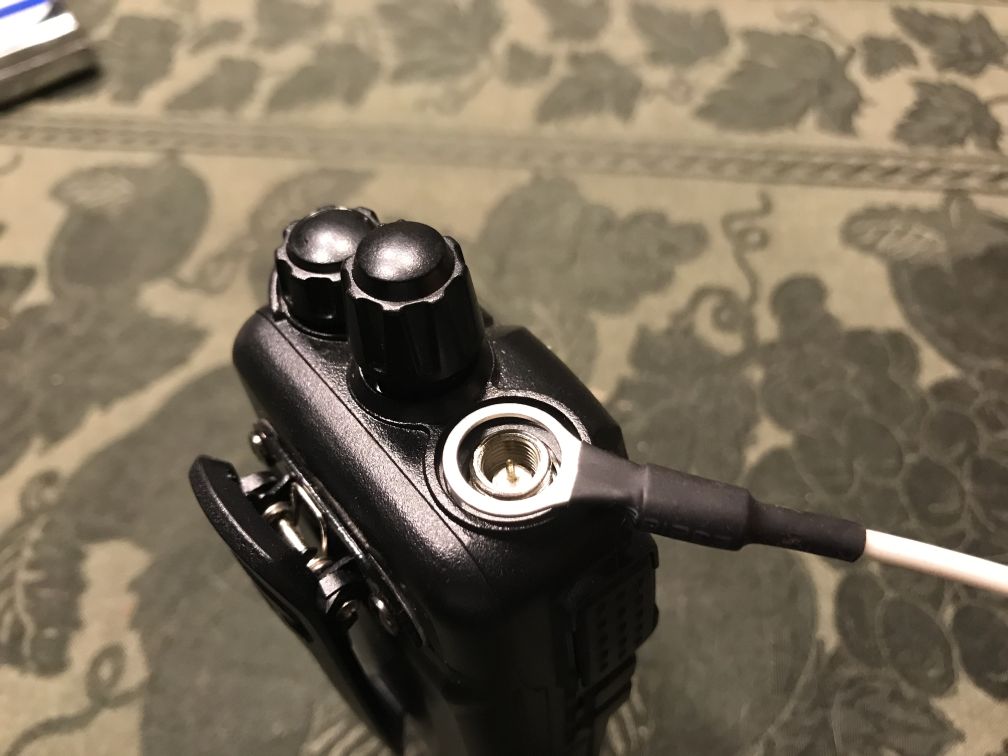
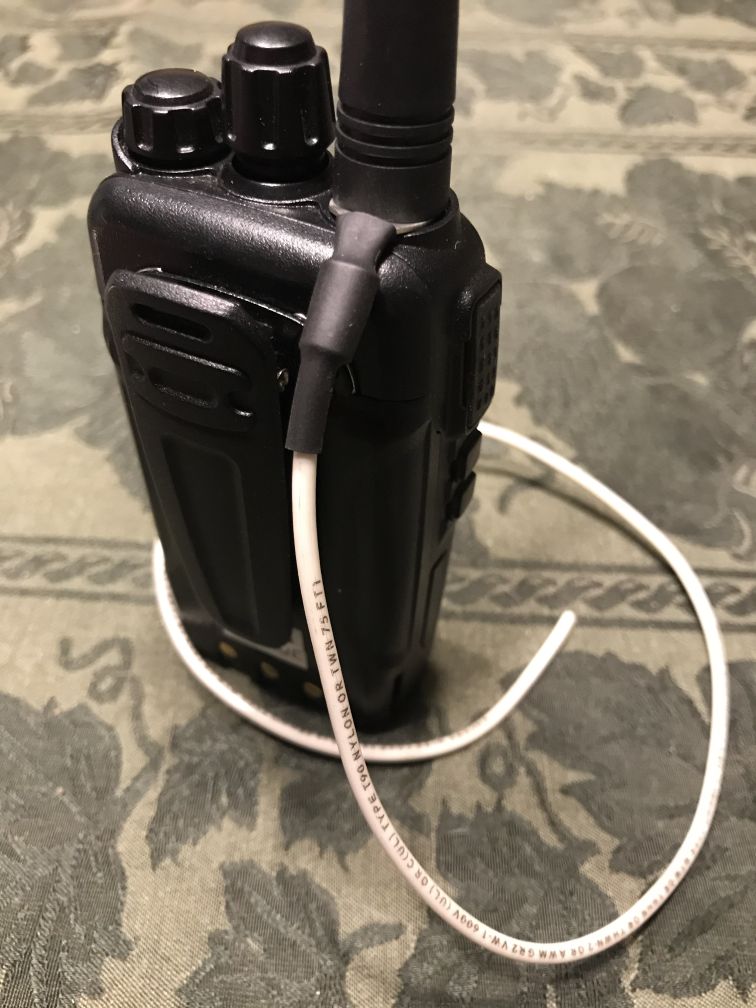
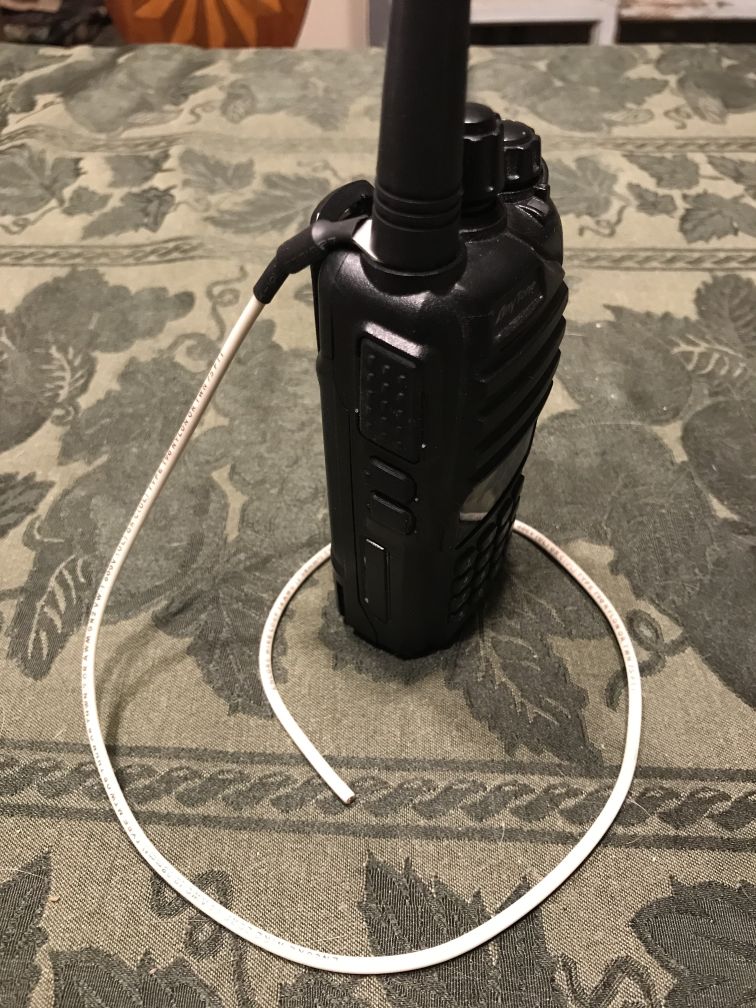

#6 or #8 ring terminal 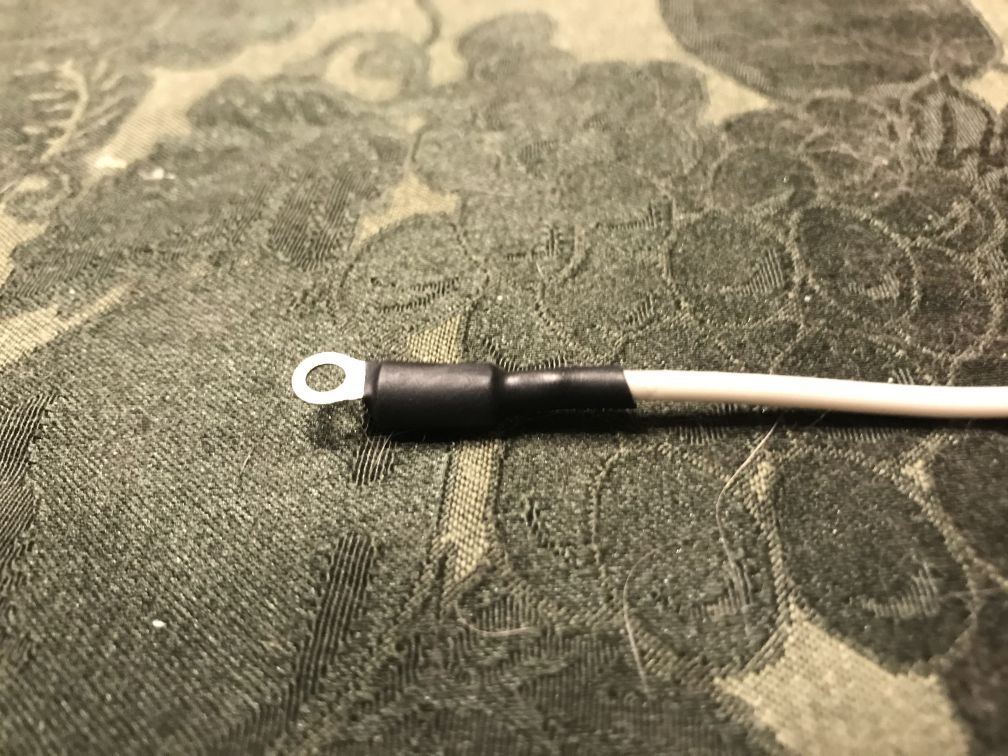
#6 or #8 ring terminal 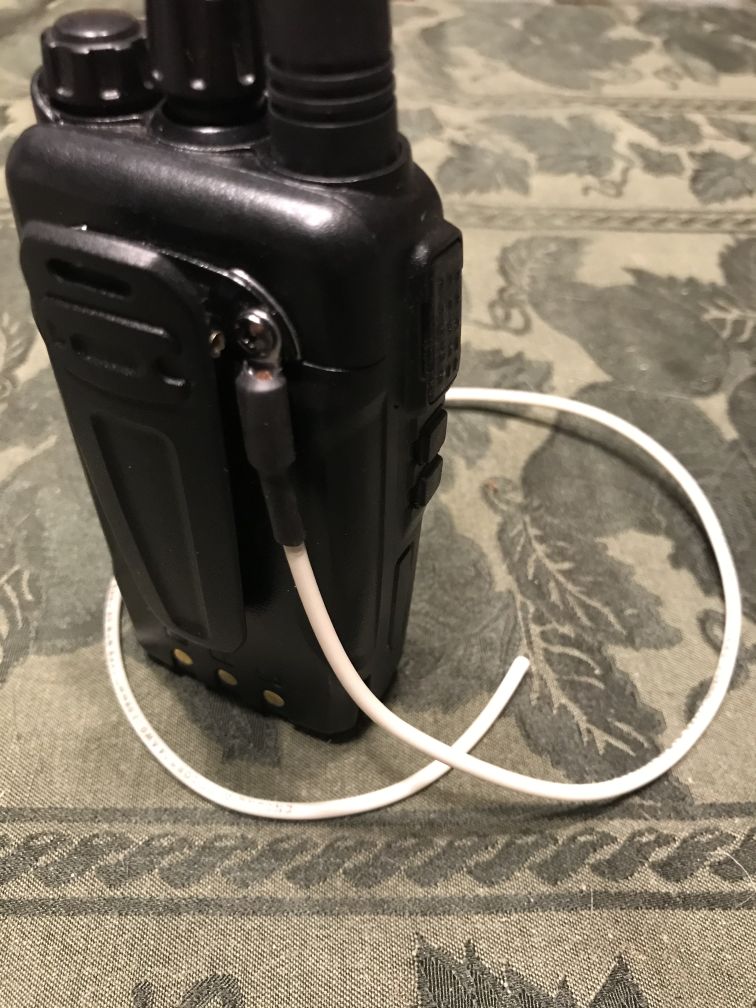
This screw is connected to antenna ground
References/Sources
- Tiger Tails, Fact or Fiction? – https://www.youtube.com/watch?v=BztTRFxsxNs
- Handheld Radio Counterpoise – https://www.youtube.com/watch?v=dZwVnwhaf_s
- https://m0ukd.com/calculators/quarter-wave-ground-plane-antenna-calculator/
- Images from Wikipedia
[…] Building the Tiger Tail Antenna – Paratus RadioAug 24, 2020 … “If you can make a dipole antenna, then you can make any antenna.” – NC Scout. Background. Your handheld radio has an antenna that is a … […]